Proven SEO Content Audit Strategies You Need in 2025
What is An SEO Content Audit and Why Do You Need One?
With how trends in content and digital marketing continually evolve, Search Engine Optimization (SEO) is no exception. With the advent of AI and machine learning, search engines have become increasingly sophisticated in understanding user intent and delivering relevant results, especially as Google deploys various AI tools to filter and streamline results for user benefits. To stay ahead in this competitive environment, businesses must prioritize a robust content strategy that includes regular content audits, that are often a part of professional SEO services such as ours.
A content SEO audit is a comprehensive review of a website’s content to assess its quality, relevance, and effectiveness in achieving specific goals. By conducting regular site content audits, businesses can identify areas for improvement, optimize their content for search engines, and enhance the overall user experience.
The primary objectives of a content audit are to:
- Identify outdated or low-quality content
- Optimize content for search engines
- Enhance user experience
- Identify content gaps
- Measure content performance
Following this audit for your website content, you can begin addressing these areas, businesses can improve their website’s visibility, attract more organic traffic, and ultimately drive more conversions.

Recommended Read: Content Marketing Pricing in 2024: Is It Worth It?
Step-by-Step Content Audit Process
A well-structured content audit is the foundation for a successful SEO strategy. Here’s a step-by-step guide to conducting a thorough website content audit:
1) Inventory Your Content
The first step in any content audit is to create a comprehensive inventory of all your website’s content. This involves identifying and cataloging every piece of content, from blog posts and product pages to landing pages and FAQs.
Tools to Use:
- Screaming Frog SEO Spider: This powerful tool can crawl your entire website, identifying all URLs, HTML tags, and other relevant information.
- Custom Scripts: For more advanced users, custom scripts can be used to extract specific data points and create detailed content inventories.
Categorizing Your Content
Once you’ve identified all your content assets, the next step is to categorize them. This will help you identify patterns, gaps, and opportunities for improvement. Consider categorizing your content by:
- Format: Blog posts, product pages, landing pages, etc.
- Topic: Specific themes or subjects covered by your content.
- Intent: Informational, commercial, transactional, or navigational intent.
By categorizing your content, you can easily identify content clusters, redundant content, and areas where you may need to create additional content. We know this is a lot of information, which is why it might help to get some assistance from expert SEO services, or start out with SEO content writing services and work your way up.
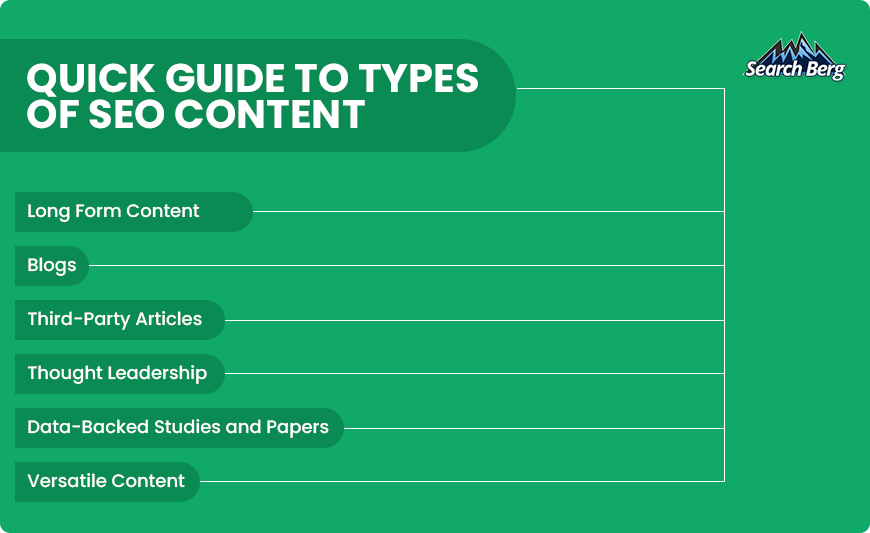
Recommended Read: Why is Link Building Important for SEO?
2) Evaluate Content Performance
Once you’ve inventoried and categorized your content, the next step is to evaluate its performance. This involves analyzing various metrics to understand how well your content is performing and identify areas for improvement.
Keyword Analysis
Keywords are the foundation of SEO. By analyzing the keywords that your content ranks for, you can identify opportunities for optimization. Consider the following:
- Keyword Relevance: Ensure that your content is targeting relevant keywords that align with user intent.
- Keyword Difficulty: Evaluate the difficulty of ranking for target keywords and prioritize those with a higher potential for success.
- Keyword Cannibalization: Identify instances where multiple pages on your website are competing for the same keywords.
- Keyword Gaps: Identify keywords that your competitors are ranking for, but you are not.
Backlink Profile Audit
Backlinks are essentially votes of confidence from other websites. A strong backlink profile can help improve your website’s authority and search engine rankings. While we offer comprehensive backlink audits and recommendations, if you’d like to start off on your own, here’s what you need to look for:
- Quality Backlinks: Focus on high-quality backlinks from reputable websites in your industry.
- Toxic Backlinks: Identify and disavow any low-quality or spammy backlinks that could harm your website’s reputation.
- Link Diversity: A diverse backlink profile, with links from various sources, can help improve your website’s authority.
- Anchor Text: Analyze the anchor text used for your backlinks to ensure it is relevant and optimized for your target keywords.
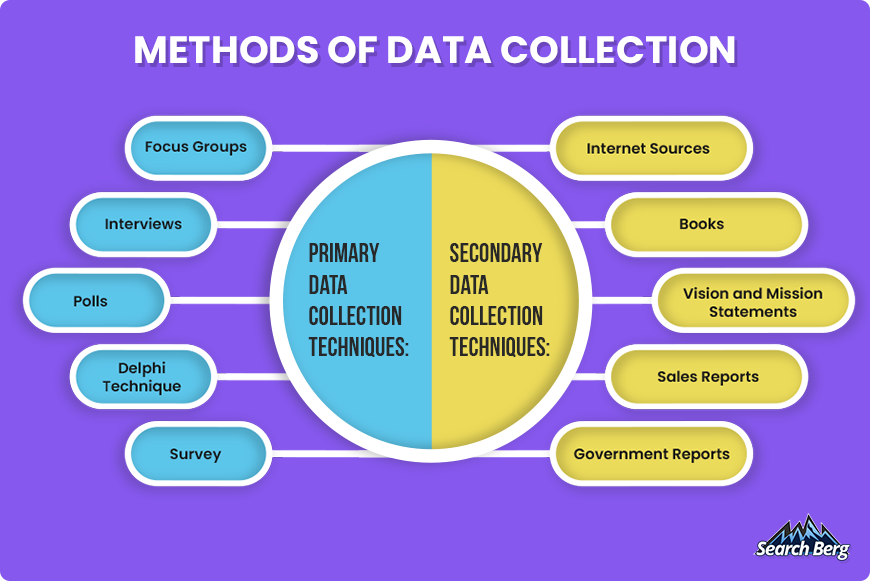
SERP Analysis
Monitoring your website’s search engine rankings is crucial for identifying trends and opportunities for gaining more traffic. Use tools like Google Search Console to track your performance and identify competitors’ strategies as part of your site content audit.
- Position Tracking: Monitor your website’s position for target keywords over time.
- Competitor Analysis: Analyze your competitors’ top-ranking pages to identify gaps and opportunities.
- SERP Features: Pay attention to SERP features like featured snippets, knowledge panels, and people also ask boxes to optimize your content accordingly.
User Engagement Metrics
User engagement metrics provide valuable insights into how users interact with your content. By analyzing these metrics, you can identify areas where your content may be falling short and make necessary improvements.
- Bounce Rate: A high bounce rate indicates that users are leaving your website quickly after landing on a page.
- Time on Page: A longer time on page suggests that users are engaged with your content.
- Click-Through Rate (CTR): A high CTR indicates that your content is compelling and relevant to users.
A comprehensive content audit should focus on evaluating your content performance and then make data-driven decisions to improve your website’s visibility, user engagement, and overall, SEO performance.
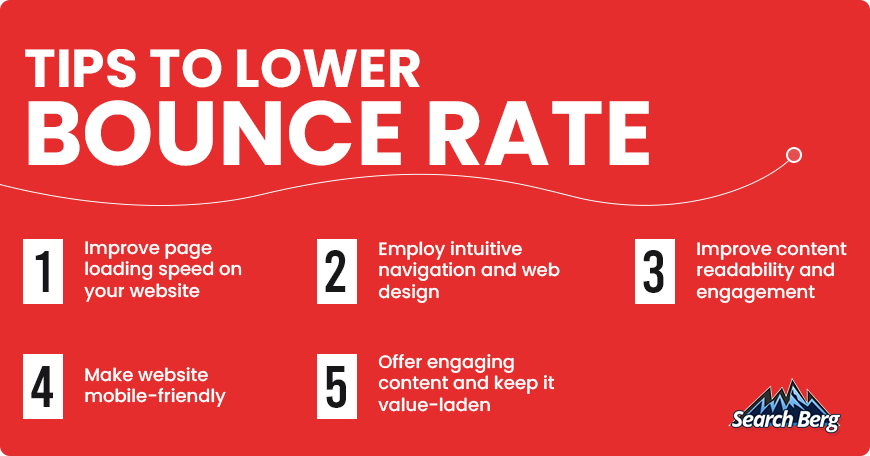
3) Identify Content Gaps and Opportunities
Once you’ve evaluated your existing content, it’s time to look for opportunities to create new, high-quality content. By identifying content gaps and opportunities during the SEO content audit, you can attract more organic traffic and improve your website’s authority.
Topic Gap Analysis
A topic gap analysis involves identifying topics within your niche that are not currently being covered by your website or are not being covered in sufficient depth. To conduct a topic gap analysis, you can use the following techniques:
- Keyword Research: Use keyword research tools like Google Keyword Planner to identify relevant keywords and topics.
- Competitor Analysis: Analyze your competitors’ content to identify any gaps in their coverage.
- User Intent Analysis: Understand the intent behind user searches to create content that meets their needs.
Competitor Analysis
By analyzing your competitors’ content strategies alongside a content audit, you can identify opportunities to differentiate your content and gain a competitive edge. Here are some key areas to focus on:
- Content Quality: Assess the quality, depth, and relevance of your competitors’ content.
- Content Quantity: Analyze the quantity of content your competitors are producing.
- Content Distribution: Evaluate how your competitors are distributing their content through social media, email marketing, and other channels.
- Link Building: Analyze your competitors’ backlink profiles to identify opportunities for link building.
Content Pillar Strategy
A content pillar strategy involves creating in-depth, comprehensive content on core topics within your niche. These pillar pieces of content can serve as the foundation for a cluster of related content, such as blog posts, infographics, and videos.
To identify potential content pillars, consider the following:
- Core Topics: Identify the core topics that are most relevant to your target audience.
- User Intent: Understand the user intent behind these topics to create content that meets their needs.
- Keyword Research: Use keyword research to identify relevant keywords and phrases.
- Competitor Analysis: Analyze your competitors’ content pillars to identify gaps and opportunities.
You may be surprised at how helpful a content pillar strategy is for improving your website’s authority, attract more organic traffic, and establish yourself as an expert in your niche.
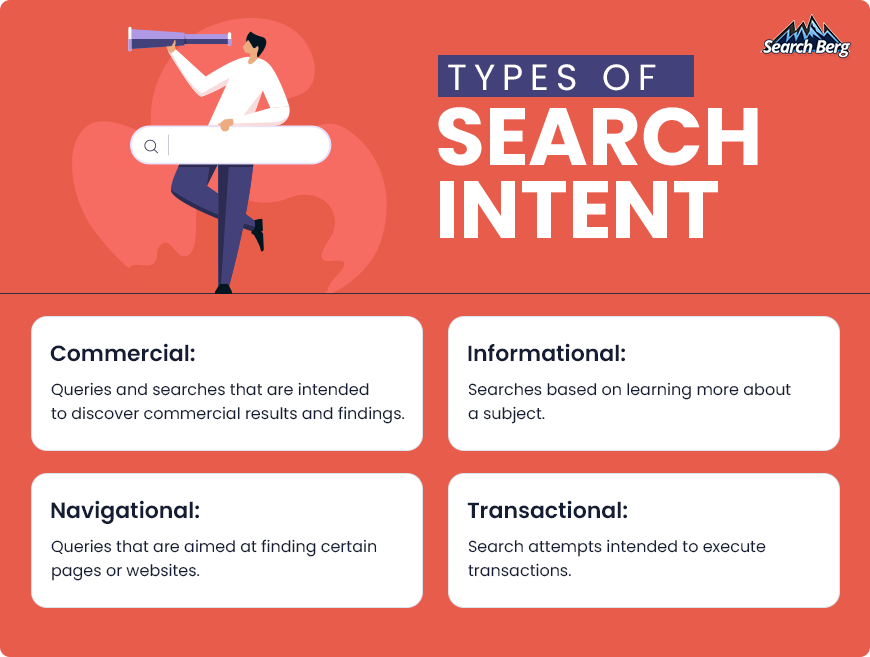
4) Optimize Existing Content
Once you’ve identified areas for improvement through your content audit, it’s time to optimize your existing content. This involves addressing technical issues, improving on-page SEO, and enhancing the overall user experience.
Technical SEO
Technical SEO involves optimizing the technical aspects of your website to improve its search engine visibility. Here are some key areas to focus on:
- Broken Links: Identify and fix broken links to improve user experience and avoid losing valuable link equity.
- Page Load Speed: Optimize your website’s load speed by compressing images, minifying CSS and JavaScript, and leveraging browser caching.
- Mobile-Friendliness: Ensure your website is optimized for mobile devices to provide a seamless user experience.
- XML Sitemap: Create and submit an XML sitemap to help search engines discover and index your website’s pages.
- txt: Use a robots.txt file to instruct search engine crawlers which pages to crawl and which pages to ignore.
On-Page SEO
On-page SEO involves optimizing the content and HTML source code of your web pages to improve their search engine rankings. Here are some key on-page SEO factors:
- Title Tags: Create unique, relevant, and keyword-rich title tags for each page.
- Meta Descriptions: Write compelling meta descriptions that accurately describe the content of each page.
- Header Tags: Use header tags (H1, H2, H3, etc.) to structure your content and improve readability.
- Image Alt Text: Use descriptive alt text for images to improve accessibility and SEO.
- Keyword Optimization: Use relevant keywords throughout your content, including in the title tags, meta descriptions, header tags, and body copy.
We know this probably sounds like a lot—but don’t worry. Our professional SEO services and SEO writing services can help you handle the technicalities, so you don’t need to break a sweat!

Content Quality and Relevance
High-quality, relevant content is essential for attracting and retaining users. Here are some tips for improving your content:
- User Intent: Create content that meets the specific needs and intent of your target audience.
- Readability: Write clear, concise, and easy-to-read content.
- Freshness: Regularly update your content to keep it fresh and relevant.
- Unique Value Proposition: Offer unique insights and perspectives that differentiate your content from competitors.
User Experience
A positive user experience is crucial for attracting and retaining visitors. Here are some tips for improving user experience:
- Clear Navigation: Make sure your website’s navigation is easy to understand and use.
- Fast Loading Times: Optimize your website’s load speed to reduce bounce rates.
- Mobile-Friendly Design: Ensure your website is mobile-friendly and responsive.
- Secure Website: Use HTTPS to protect your website and user data.
- Accessibility: Make your website accessible to users with disabilities.
By following these best practices, you can optimize your existing content and improve your website’s search engine rankings and user experience.
5) Create a Content Calendar and Strategy
A well-structured content calendar and strategy are essential for maintaining a consistent publishing schedule and ensuring that your content aligns with your overall business goals. After your site’s content audit, you must take proactive steps to manage your approach.
Content Calendar
A content calendar is a visual representation of your planned content. It helps you organize your content ideas, assign tasks, and track deadlines. When creating a content calendar, consider the following:
- Content Types: Determine the types of content you’ll create, such as blog posts, articles, videos, infographics, and social media posts.
- Content Topics: Identify the topics that are relevant to your target audience and align with your business goals.
- Publishing Frequency: Decide how often you’ll publish new content, whether it’s daily, weekly, or monthly.
- Content Distribution Channels: Determine where you’ll share your content, such as your website, social media, and email newsletters.
- Task Assignments: Assign tasks to team members, including content creation, editing, design, and promotion.
- Deadlines: Set deadlines for each stage of the content creation process, from ideation to publication.
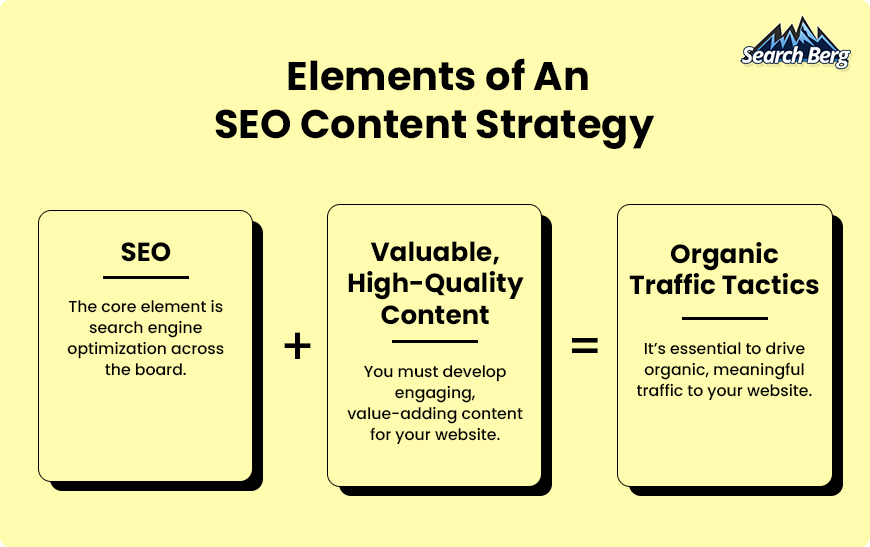
Content Strategy
A content strategy outlines your overall approach to content creation and distribution. It should align with your business goals and target audience needs as well as the findings of your website content audit. When developing a content strategy, consider the following:
- Target Audience: Identify your target audience and understand their needs, interests, and pain points.
- Brand Voice and Tone: Develop a consistent brand voice and tone that reflects your brand’s personality.
- Content Goals: Define specific goals for your content, such as increasing website traffic, generating leads, or building brand awareness.
- Content Formats: Determine the best content formats to use to achieve your goals, such as blog posts, articles, videos, infographics, and social media posts.
- Content Distribution Channels: Identify the best channels to distribute your content, such as your website, social media, email marketing, and paid advertising.
- Content Promotion: Develop a content promotion strategy to increase visibility and engagement, such as sharing on social media, guest posting, and email marketing.
- Content Analytics: Track key metrics, such as website traffic, engagement rates, and conversions, to measure the effectiveness of your content.
If this sounds like too much to handle, you can bring on our search engine optimization services to help you craft a well-structured content calendar and strategy, you can ensure that your content is consistently published, engaging, and effective in achieving your business goals.
Recommended Read: Google’s New Content Demotion Tactics: Why Consistency Is Key for SEO Success
Advanced Content Audit Techniques for 2025
With how rapidly our KPIs and approaches for SEO content audits change, you have the opportunity to use advanced tools and strategies will be essential to stay ahead of the curve. Here are some of the most promising techniques:
AI-Powered Content Analysis
Artificial intelligence (AI) has revolutionized the way we analyze and optimize content. By leveraging AI-powered tools, you can gain valuable insights into your content’s readability, sentiment, and topic coherence.
Key benefits of AI-powered content analysis:
- Improved Readability: AI can analyze the complexity of your content, identifying areas that may be too dense or difficult to understand.
- Enhanced Sentiment Analysis: AI can determine the overall sentiment of your content, whether it’s positive, negative, or neutral.
- Enhanced Topic Coherence: AI can identify inconsistencies or gaps in your content’s topic focus.
Tools to consider:
- Grammarly: This popular writing assistant uses AI to identify grammar and spelling errors, as well as suggest improvements in style and tone.
- Quillbot: This AI-powered tool can help you rewrite and paraphrase your content to improve its readability and originality.
- MarketMuse: This SEO tool uses AI to analyze your content and identify opportunities for improvement, such as keyword optimization and topic expansion.
Voice Search Optimization
Voice search is becoming increasingly popular, and optimizing your content for voice search queries can help you attract more organic traffic.
Key strategies for voice search optimization:
- Natural Language: Use natural language and conversational tone in your content.
- Long-Tail Keywords: Target long-tail keywords and phrases that people are likely to use in voice search queries.
- Featured Snippets: Optimize your content to appear in featured snippets, as these are often displayed in voice search results.
Video Content Audit
Video content has become a powerful tool for engaging audiences and driving traffic. A video content audit can help you identify opportunities to improve your video content’s performance.
Key areas to focus on:
- Video Quality: Ensure your videos are high-quality and visually appealing.
- Video Length: Optimize your video length to keep viewers engaged.
- Video SEO: Optimize your video titles, descriptions, and tags to improve search engine visibility.
- Video Analytics: Use video analytics tools to track viewer engagement and identify areas for improvement.
Local SEO Content Audit
If you have a local business, it’s important to conduct a thorough website content audit and then optimize your content for local search queries.
Key strategies for local SEO content audit:
- Google My Business: Claim and optimize your Google My Business listing.
- Local Keywords: Target local keywords and phrases, such as “best pizza in San Jose, CA”.
- Local Citations: Build citations on local directories and review sites.
- Local Content: Create content that is relevant to your local audience, such as blog posts about local events or news.
It’s important to consider the benefits these advanced content audit techniques offer for improving your website’s search engine rankings, user engagement, and overall performance.
Recommended Read: Beginner’s Guide to SEO: 10 Simple Steps to Get Started (2024 Update)
Invest in a Comprehensive Content Audit Through Us
If you’re overwhelmed by how extensive content audits can be, it’s important to find a service that alleviates your stress.
Search Berg uses the latest tools and techniques to revolutionize SEO audits. By analyzing technical SEO, on-page SEO, content quality, backlinks, and user experience, it provides actionable insights.
Here’s what you get when you hire our SEO services:
- Identifies and fixes technical issues: Broken links, slow loading times, and mobile optimization problems.
- Optimizes on-page SEO: Improves title tags, meta descriptions, header tags, and image alt text.
- Enhances content quality: Analyzes content for relevance, originality, and engagement.
- Uncovers valuable keyword opportunities: Identifies relevant keywords and analyzes competitor strategies.
- Strengthens backlink profile: Identifies toxic backlinks and suggests link building opportunities.
- Improves user experience: Analyzes user behavior and suggests optimizations for mobile-friendliness and page speed.
- Predicts future trends: Leverages AI to anticipate future SEO trends and provide proactive recommendations.
By leveraging Search Berg’s SEO services, businesses can improve their search engine rankings, attract more organic traffic, and enhance their overall online visibility. Alternatively, you can kickstart your journey with us through our SEO-friendly content writing services and get a taste of what we offer.
We focus on postings, social media, and more, using the latest tools and solutions to drive results. Get in touch with us to learn more.
Transform Your Content with Pro Strategies!
Discover how to fine-tune your content, boost your rankings, and maximize results. Subscribe now to get expert insights, actionable tips, and industry updates directly to your inbox!
No spam, just expert advice!














